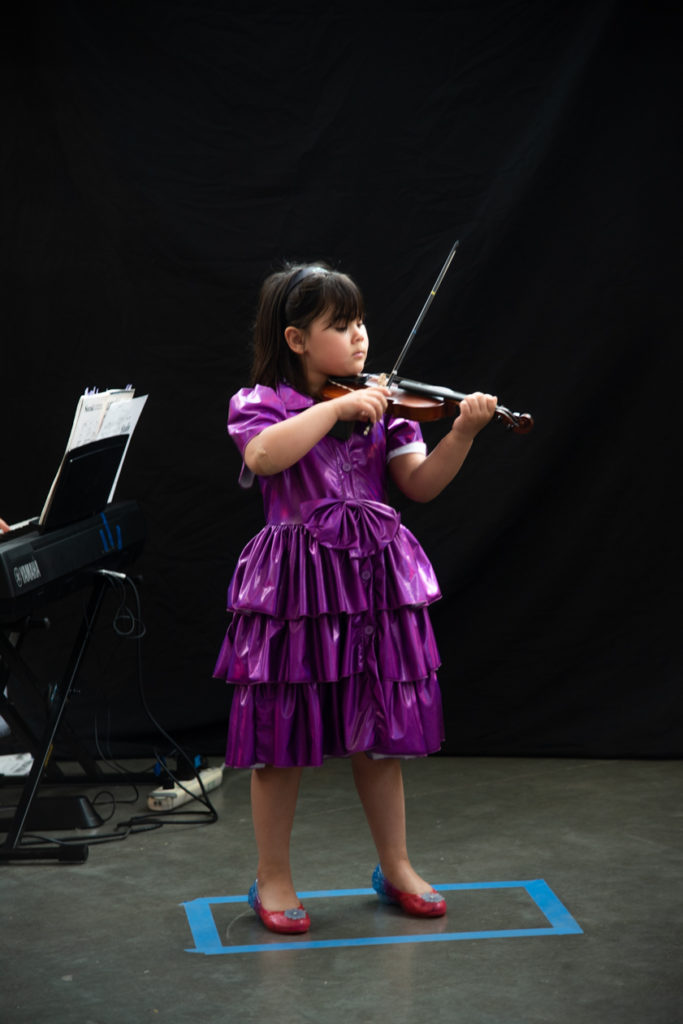
I am not a Suzuki certified teacher trainer. I am just a very passionate Suzuki teacher sharing the experiments I’m running in our studio. Visit the SAA to look into Suzuki Teacher Training.
I’m going to do a brief breakdown of my teaching points in Lightly Row.
I used to teach this piece concurrently with Twinkle theme and used it to develop independent fingers and alternating bow division. I have changed my strategy– especially after studying the Step-by-Step approach with Daina Volodka Staggs and Charles Krigbaum. Now I lean heavily toward a prepared second finger and “waiting bows.” Let’s dive in.
Preparation
- Students have been listening to the Lightly Row reference recording from day 1, but once we’ve added the longer bowing to Twinkle theme I will assign an “Outrageous” listening project: 10 times, in a row, every day.
- Cuckoo. I use ‘The Cuckoo Song’ from Step-by-Step to develop the E to C# tunnel. First we sing it, then we pluck it, then we play it. This also makes a fun call and response game in group class.
The jewel of Lightly Row, in my opinion, is that E to C# tunnel that allows students to move in thirds. We’ll see this come up again in Song of the Wind (arpeggio), Go Tell Aunt Rhody (returning to the A phrase), O Come Little Children (beginning), May Song (arpeggio), and Long Long Ago (in the A phrase). The prepared 1st and 2nd finger assure the note will be in tune and the tunnel assures the hand placement is correct and there is not squeezing. As I see Suzuki do a lot, I think this is an example of setting the bar very high very early so the only option for the student to succeed is for them to perform the tunnel skillfully.
Draw attention to scratchy sound and noisy neighbors because those are the aural signals to students and parents that the tunnel is not in place. Do not move on to the piece until the child can successfully play Cuckoo with no extra noise. Do not move on to Song of the Wind until the child can play Lightly Row with no extra noise.
Introduction to the Piece
Once Lightly Row becomes the working piece (Twinkle becomes a review piece) I then explain that Lightly Row is four sentences long. I teach them one sentence per week by rote, plucking. In the meantime we develop the “waiting bow.” Drive the bow from ¼ to ½ and on long notes you drive the same speed, but then wait the turn on the tape until it’s time for the next note.
We described the form of Twinkle as Bread, Cheese, Cheese, Bread. Sometimes it is helpful to describe Lightly Row like a Pizza: Crust, Cheese, Veggies, Cheese.
If you student has trouble in the third sentence with only playing 4 B’s or too many B’s, try saying “BBBB 123.” I think this helpfully differentiates between the repeated notes and the scale gesture. It also makes much more sense musically than saying, “Play 5 B’s!”
Putting it All Together
When the fingers can pluck the notes from each sentence without any extra notes, and the bow is smooth, rhythmic and ringing, we can put the bow together with the fingers.
We start with the first line because it is the most challenging bowing and makes musical sense to the child. While starting in the middle of the piece demonstrates a really durable understanding of the music, I don’t think we should work on that skill right away in Lightly Row. In the first sentence I will often teach parents how to pattern the bow, and then have them use the “1. I drive you ride, 2. You drive I ride, 3. You drive alone” sequence.
I find the easiest line to put together is the second because of the consistent bowing.
Next Steps
As I alluded to earlier, I want to make sure students can play line by line and start on a different line than the first. Sometimes we will even mix up the order (fun if student directed) so they play a completely out of order piece.
I also add a “magic ending” where the child takes of the string, does a backwards C, and hovers in the air.

Leave a Reply